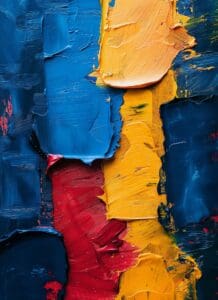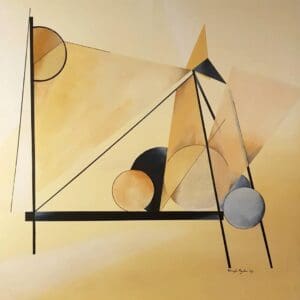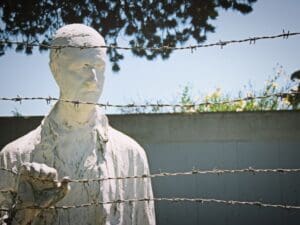Gustav Klimt was an Austrian painter of Symbolism and Art Nouveau movement, born on July 14, 1862 to Ernst Klimt, a gold engraver, and Anna Klimt, at Baumgarten, a small place near Vienna. He had two brothers and four sisters & was the second of the siblings. His childhood struggled with poverty and economic difficulties. Bagging a scholarship in 1876, Gustav Klimt completed his architectural painter training form the Vienna School of Arts and Crafts in 1883. His basic work reflected the elements of conservative training. In the year 1877, his brother, Ernst also joined the Vienna School.
Both the brothers, along with a friend, Franz Matsch formed a great team called the “Company of Artists.” With the help of their teachers, the trio completed the murals for Kunsthistorisches Museum in Vienna by 1880. Gustav Klimt started his career by painting the ceilings and the other interiors of the tall buildings. Paintings, sketches, and murals formed the major portion of his works, themed mainly around female body. He adored and idolized Hans Makart, the famous history painter of his time. A series of “Allegories and Emblems” was Klimt’s first major success.
Gustav Klimt, for his great dedication and contribution to the paintings in Burgtheatre, was awarded the Golden Order of Merit in the year 1888 from Franz Josef I, the then Emperor of Austria. Klimt became the most prominent member of the University of Vienna and the University of Munich. He met Emilie Floge in 1890 who became his companion for life. Later, in 1892, his practice was seriously affected due to the death of his father and brother and their families’ financial responsibility shifting to him. In 1894, Gustav started painting “Philosophy,” “Medicine,” and “Jurisprudence” for the Great Hall in the University of Vienna, his last public commission. Termed pornographic and heavily criticized, the three paintings were never used. Klimt with some others founded Wiener Secession (Vienna Secession or Vienna Art Nouveau) in 1897 and became its president. He stayed with Secession until 1908.
The peak of Gustav’s career was checkered with a mix of critical reactions and rave reviews. The artist started the use of gold in paintings, such as “Pallas Athene (1898)” and “Judith I (1901).” The most famous works of Klimt in his ‘Golden Phase’ were the “Portrait of Adele Bloch-Bauer I” in 1907, and “The Kiss” in 1907-1908. In 1904, his finest art, “Expectation” and “Fulfillment,” which he created with the help of other fellow artists, was used to adorn the house of the richest Industrialist in Belgium. Gustav Klimt painted many canvases of women wrapped in fur between 1907 and 1909. He was very selective in choosing the subject and the theme of the paintings. He mostly worked at sexually active and erotic pieces, which unleashed his sexual interest in women.
In the year 1911, his painting, “Death and Life (1911)” was awarded the best painting at the World Exhibition in Rome. His mother, Anna, died in 1915 and 3 years later, on February 6, 1918, Gustav Klimt breathed his last at Vienna, Austria, due to pneumonia and stroke. He left many of his paintings unfinished. Some of his paintings have fetched record-breaking prices, for instance, “Landhaus am Attersee” was sold for $29.13 million, and “Adele Bloch-Bauer I (1907)” commanded a hefty $135 million.
Source by Annette Labedzki
Disclaimer: The views and opinions expressed in this article are those of the authors and do not necessarily reflect the official policy or position of Irish Artmart.





